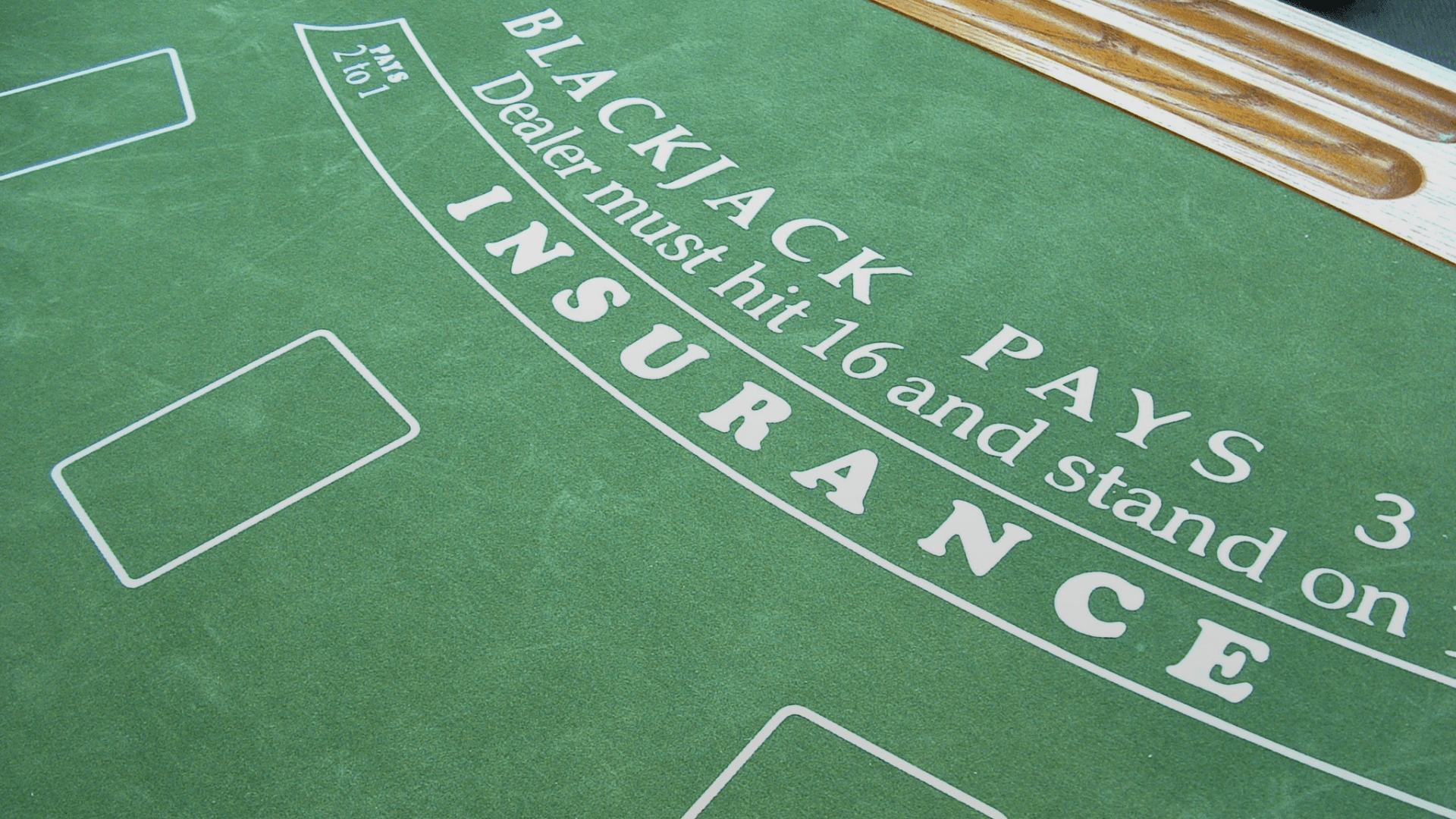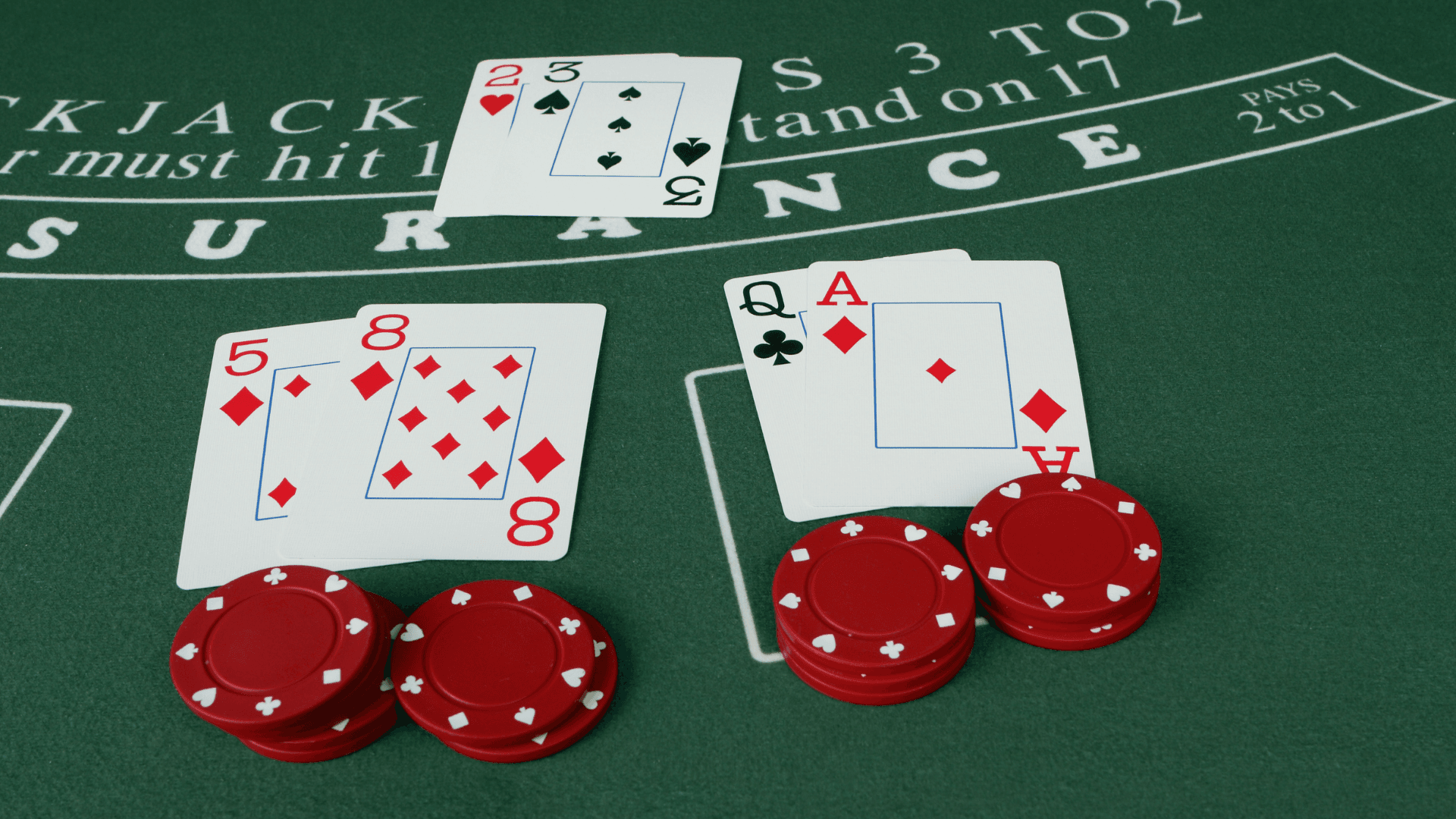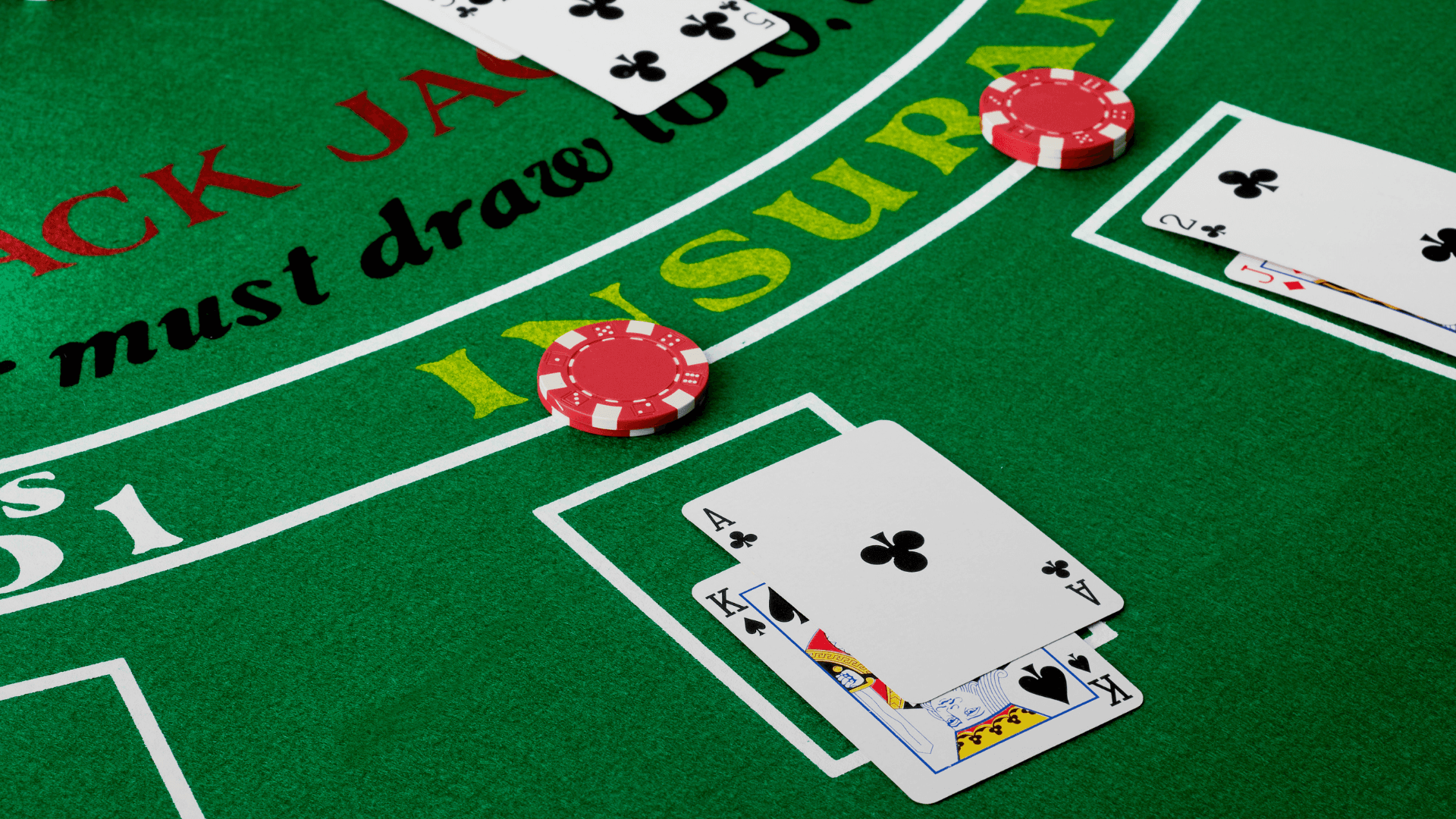Blackjack is a fast-paced, exciting casino game. Plus it offers some of the best odds you’ll find in a casino. It’s also a quick casino game to learn. And whilst it can take years to master, with a little help, you can quickly reach the point where you can make informed bets and play with confidence.
Here, we explain the rules of blackjack for both players and dealers, to make sure you understand blackjack rules clearly. You’ll learn about blackjack card values, dealer rules, blackjack payouts, and some different variants of blackjack rules.
What is Blackjack?
In blackjack, each player at the table is competing against the dealer. When you’re at the blackjack table, you don’t compete at all against the other players.
The goal of the player is to hold a hand of cards worth as close to 21 as they can get it, but without going over 21 and going bust. If a player ends a round closer to 21 than the dealer, the player wins. If the dealer goes bust, all the players that also haven’t gone bust win their bet.
The Blackjack Table Explained

Whilst blackjack tables can vary in style and design, they typically all have common features that aid in gameplay.
The dealer typically sits or stands by themselves at the straight side of the table in their own area, whilst the players sit together at the opposite curved side. The dealer has the cards, often in a card shoe, and usually stacks of casino chips in a tray.
Each player will typically have a betting box marked out on the table in front of where they sit. Your cards will be dealt in front of this area, and you place your chips into it to make bets. Your betting box may just be a simple square or circle with the words “Place your bets here” written inside of it. But on some blackjack tables the betting boxes will have different areas in them in which you can also place side bets.
Blackjack Card Values and Scoring
A standard 52-card deck is used in most games of blackjack, usually six to eight decks shuffled together.
Cards are assigned the following values in blackjack:
PLAYING CARD | VALUE IN BLACKJACK |
Ace | 1 or 11 |
2 | 2 |
3 | 3 |
4 | 4 |
5 | 5 |
6 | 6 |
7 | 7 |
8 | 8 |
9 | 9 |
10 | 10 |
Jack | 10 |
Queen | 10 |
King | 10 |
Aces count as 11 as standard, except in cases when that value would make a hand worth more than 21. In this instance, they instead revert to a value of 1.
For example, if you were dealt an Ace and a 5 card, your hand would total 16 (11 + 5). But if you hit and take a third card, and it’s an 8, your hand would total 24 (11 + 5 + 8). So instead the Ace takes a value of 1, to make your hand now worth 14 (1 + 5 + 8).
Player Actions in Blackjack

When you take your seat at a blackjack table and a new round of betting begins, each player will:
Place their bet: Put your chips into your betting box.
Receive their first card: The dealer will hand one face-up card to each player. The dealer will also deal themselves one face-down card called their hole card.
Receive their second card: The dealer will hand a second face-up card to each player. The dealer gives themselves one face-up card called their up-card.
Take their player actions: Beginning with the first player to the left of the dealer, and moving from left to right, each player takes actions to try and get their hand of cards closer to 21. You can:
- Hit: Take another card (each player can do this multiple times).
- Stand: Stay with your current hand once you’re satisfied with it.
- Double-down: Double your bet whilst taking another card.
- Split: Split your hand into two if you were dealt a matching pair of cards.
- Make an insurance bet: If the dealer’s face-up card is an ace, each player can make an insurance side bet – of up to half of your original stake – that the dealer’s face-down card has a value of ten (and thus the dealer has an unbeatable hand of 21).
- Surrender: In some games of blackjack, you can surrender if you don’t like your hand. You’ll get half your bet back and give half to the dealer.
The dealer takes their actions: Once all players at the table have finished their turn, the dealer reveals their face-down card. If the dealer’s hand is 16 or less, they usually have to hit. If it’s 17 or higher, they stand.
Players receive their winnings: If any of the players beat the dealer, they’ll receive their winnings. All other chips and cards will be cleared away, and a new round of betting begins.
Dealer Actions in Blackjack
The dealer runs the blackjack game, managing the chips and betting, and dealing cards. It’s imperative they have an excellent grasp of blackjack dealer rules.
During a round of blackjack, the dealer:
Deals themselves a face-down hole card: After they deal each player their first card.
Deals themselves a face-up, up card: After they deal each player their second card.
Takes their dealer actions: After each player has finished taking their actions, the dealer turns over their face-down hole card to reveal their hand. Based on the value of their hand, the dealer must take set actions, rather than using their own discretion, usually:
- If the dealer’s hand totals 16 or lower, they have to hit and take another card.
- If the dealer’s hand totals 17 or higher, they have to stand and take no further dealer actions.
However, the dealer’s actions may vary by casino and table. You can always ask the dealer to clarify the rules at the start of a hand before the action begins.
How to Deal in Blackjack?
Dealing in blackjack is relatively simple:
● The dealer deals from their left to their right, starting with the furthest player on the left.
● They deal one card face-up to each player, then a down card to themselves.
● The dealer hands a second face-up card to each player, then a face-up card to themselves.
● The dealer needs to make sure all cards are laid diagonally on top of each other, so that both cards can be clearly read.
Blackjack Hand Outcomes and Payouts
● A player wins in blackjack if their final hand is closer to 21 than the dealer’s, or if the dealer goes bust (their hand exceeds 21).
● A player loses in blackjack if the dealer’s final hand is closer to 21 than theirs, or if the player goes bust (their hand exceeds 21).
● It’s a push , where the player and the dealer draw, and the player receives their money back without any winnings.
Payouts for winning players can vary by blackjack game, but the most common blackjack payouts are:
TYPE OF WIN | PAYOUT | TOTAL WINNINGS FROM A £1 BET |
Normal winning hand | 1:1 | £2 (£1 winnings + your £1 bet back) |
Blackjack hand (your hand totals 21) | 3:2 | £2.50 (£1.50 winnings + your £1 bet back) |
Insurance bet (made at up to half your original £1 bet) | 2:1 | £1.50 (£1 winnings + your £0.50 bet back) |
As well as insurance bets, some blackjack tables allow other side bets to be made, including Perfect Pairs and 21+3 bets, each with their own payouts.
Perfect Pairs Payouts
With Perfect Pairs bets, you make a side bet on your cards only. You bet on being handed a pair of matching cards, like two cards with the same value or the same colour.
Perfect Pairs payouts will vary by casino, but they’re typically:
TYPE OF PERFECT PAIR | PAYOUT | TOTAL WINNINGS FROM A £1 BET |
Mixed pair (two cards of the same value but different colours) | 5:1 | £6 (£5 winnings + your £1 bet back) |
Coloured pair (two cards of the same value and the same colour) | 12:1 | £13 (£12 winnings + your £1 bet back) |
Perfect pair (two cards of the same value and the same suit) | 25:1 | £26 (£25 winnings + your £1 bet back) |
21 + 3 Bets Payouts
With 21 + 3 side bets , you place a bet on your two first cards and the up-card of the dealer. You win your bet if certain card combinations are shown, like three cards of the same suit or three cards of the same value.
Whilst payouts can vary by casino, 21 + 3 side bet payouts are usually:
TYPE OF PERFECT PAIR | PAYOUT | TOTAL WINNINGS FROM A £1 BET |
Flush (all three cards are the same suit) | 5:1 | £6 (£5 winnings + your £1 bet back) |
Straight (all three cards are consecutively numbered, like 2, 3, 4) | 10:1 | £11 (£10 winnings + your £1 bet back) |
Three of a kind (all three cards are the same value but not the same suit) | 30:1 | £31 (£30 winnings + your £1 bet back) |
Straight flush (all three cards are consecutively numbered and are the same suit) | 40:1 | £41 (£40 winnings + your £1 bet back) |
Suited triple (all three cards are the same value and suit) | 100:1 | £101 (£100 winnings + your £1 bet back) |
Blackjack Variations

There are some common variants of blackjack you’ll often find offered by casinos and online, including:
● Spanish 21: A version of blackjack played with a 48-card Spanish deck (a standard 52-card deck with the four 10s removed). With Spanish 21, you’ll always win if you have a hand of 21, even if the dealer also has 21. The rules are less restrictive too. You can surrender at any point, split as many times as you’re able to, and double-down on any number of cards.
● Blackjack switch: A variant of blackjack where you begin each round playing two hands of cards rather than one, making equal bets on both. The real novelty of blackjack switch is that you can exchange the second cards between your hands, if that improves one or both of them. This comes at the price of all wins being paid out at 1:1, even a natural blackjack.
● Double exposure blackjack: Rather than receiving one card face-up and one face-down, the dealer receives both cards face-up, meaning players know exactly the starting hand they’re playing against. No insurance bets are allowed though, and blackjacks are paid out at 1:1, not 3:2.
Play Blackjack Online with BoyleSports
The best way to ensure you make blackjack rules second nature – including blackjack dealer rules – is to practice and play the game. You’ll find a wealth of online blackjack games available to play at BoyleSports Games , including live-streamed blackjack in our live casino .
Sign up with BoyleSports , make your first deposit, and you can play blackjack online today.


